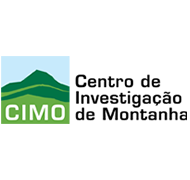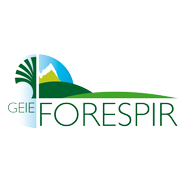Mon, 07/09/2020 - 09:34

The number and extent of forest fires varies considerably from year to year, depending on seasonal weather conditions. Moreover, there is a certain multi-year trend in the area burned throughout the Mediterranean basin and particularly in the territories of south-western Europe. This has been partly attributed to the cycle of burning and accumulation of dead biomass, typical of the regions that tend to experience forest fires in the summer season, such as southern France, Spain and Portugal. The historical trend in the number of fires in Southwest Europe is difficult to analyse, as the frequency of fires is greatly affected by the significant changes in the statistical reporting systems of the different countries in recent years.
In order to carry out studies on the trend and evolution of both the number of fires and the number of hectares burned, it is essential to have sufficiently long and homogeneous data series to be able to identify trends.
In Europe, we have historical series of fires, which are regularly updated within the framework of the European Forest Fire Information System (EFFIS). The availability of data in EFFIS is not the same for all countries, and time series of more than 25 years are only available for a few countries.
Contrasting the available data on the evolution of forest fires during the reference period, it can be seen that there is a general trend towards a decrease in the number of forest fires across Europe. However, the data also show a trend that these fires, although less numerous, are becoming increasingly devastating and uncontrollable. These fires, which have been called "sixth generation fires", are also raging in the SUDOE's forests.

Source: adapted from EFFIS STATISTICS
Comparing the available data for the 2020 fire season with the trend of the last decade, it is clear that something exceptional has happened this year.
FRANCE


Evolution of the number of fires (top) and hectares burned per year (bottom) in France from June to December 2020 (red) compared to the average for the period 2008-2019 (blue).
Source : EFFI 2020
SPAIN


Evolution of the number of fires (top) and hectares burned per year (bottom) in Spain from June to December 2020 (red) with respect to the average for the period 2008-2019 (blue).
Source : EFFI 2020
PORTUGAL


Evolution of the number of fires (top) and hectares burned per year (bottom) in Portugal from June to December 2020 (red) compared to the average for the period 2008-2019 (blue).
Source : EFFI 2020
In France, this year, the flames have devastated more than twice the surface area that is usual for this season. The number of fires also seems to have grown exponentially, with a recorded number of fires 400% higher than the average for this season.
In Spain, the trend in the number of forest fires has also been upwards, increasing considerably with respect to what is usual for this period (more than double). On the other hand, it is striking that the number of burnt hectares has been lower than the annual average for the last decade, with 35% less surface of burnt areas.
In Portugal, the trend has been similar to that of Spain in terms of the number of fires,
with a 170 % increase in 2020 compared to the average of the previous 10 years. However, in terms of burned hectares, to date there is a trend towards a decrease in the number of hectares burned by almost 50% compared to the reference period for the same dates.
What could be happening this year?
Everything seems to indicate that a particularly rainy winter and spring and the covid-19 pandemic have triggered the risk of forest fires in the SUDOE this summer.
On the one hand, the abundant rainfall this spring and, on the other, the extreme temperatures that have characterised this summer's heat waves, have led to a greater number of fires and their further spread. In addition to these meteorological factors, an unexpected factor has been added: the paralysis of the clean-up work in the mountains of many SUDOE territories as a result of the global pandemic.
This has led to a greater accumulation of biomass in highly inflammable areas of our forests, which have also been particularly productive due to the heavy rainfall in spring.
On the other hand, it would seem that the reduction in mobility induced by the health alarm has not produced a lesser incidence of the human factor, an element which triggers most of the onset of these phenomena. However, there has also been the coincidence of lack of control with the summer season and a greater use of natural free spaces far from large human agglomerations. It would therefore be of great interest to have information about the causes of the fires which have occurred and their relationship with human negligence and the situations experienced in this lack of control in the natural environment.
Far from drawing clear conclusions about the dynamics and evolution of fire risk in Southwest Europe, these data once again demonstrate the complexity of this natural risk in which human, meteorological and climatic factors converge. Indeed, the factors that seem to have influenced fire behaviour this year 2020 have been a decrease in prevention efforts due to the health crisis, and a succession of extreme weather events: late and intense rainfall in spring and extremely hot temperatures during the summer.
Underlying all this is the need to better understand the link between climate change adaptation and natural risk reduction, with particular attention to the increased frequency and intensity of extreme weather events. In particular, it is essential to strengthen cooperation between countries in managing risks that do not understand administrative borders. In particular, there is a need for greater harmonisation of policies, as a key point in reducing the impact of extreme weather events, which influence forest fires among other risks. More coherent measures and the use of innovative methods can improve the management of these risks, and this is the reason for the MONTCLIMA project.















